An emperor is a type of monarch.

Mount Harriet National Park, officially renamed as Mount Manipur National Park, is a national park located in the Andaman and Nicobar Islands union territory of India. The park, established in 1969, covers about 4.62 km2 (18.00 mi2). Mount Manipur, which is a part of the park, is the third-highest peak in the Andaman and Nicobar archipelago next to Saddle Peak in North Andaman and Mount Thullier in Great Nicobar.

Byasa plutonius, the Chinese windmill, is a butterfly found in Asia that belongs to the windmills genus (Byasa), comprising tailed black swallowtail butterflies with white spots and red submarginal crescents.
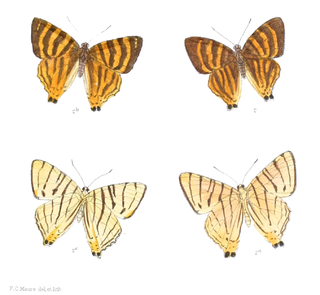
Dodona adonira, the striped Punch, is a small but striking butterfly found in the Indomalayan realm that belongs to the Punches and Judies, that is, the family Riodinidae.

Abisara savitri, the Malay tailed Judy, is a small butterfly found in Asia that belongs to the Punches and Judies, that is, the family Riodinidae.

Chrysozephyrus vittata, the Tytler's hairstreak, is a small butterfly found in India that belongs to the lycaenids or blues family.
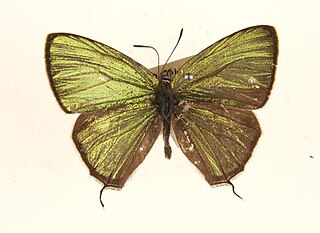
Chrysozephyrus kabrua, the Kabru hairstreak, is a small butterfly found in India that belongs to the lycaenids or blues family.

Chrysozephyrus kirbariensis, the Kirbari hairstreak, is a small butterfly found in India that belongs to the lycaenids or blues family.

Eulaceura is a genus of butterflies in the family Nymphalidae and subfamily Apaturinae.
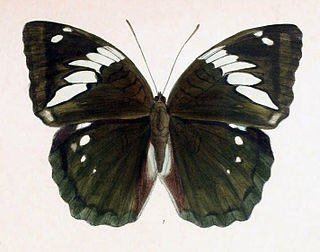
Bassarona iva, the grand duke, is a species of nymphalid butterfly found in the Himalayas.
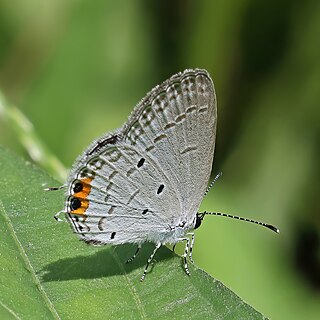
Cupido lacturnus, the Indian Cupid, is a small butterfly found in the Australasian and Indomalayan realms that belongs to the lycaenids or blues family.

Tajuria is an Indomalayan genus of butterflies in the family Lycaenidae.
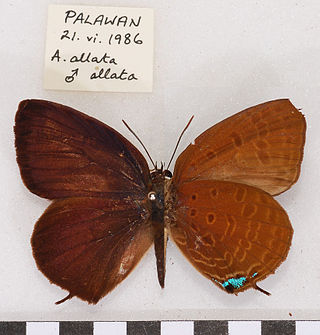
Arhopala allata is a butterfly of the family Lycaenidae. It is found in Asia.

Chitoria ulupi, the tawny emperor, is a species of nymphalid butterfly found in tropical Asia.

Mycalesis francisca is an East Palearctic species of satyrine butterfly found in China, Japan, Korea, India (Assam), Burma and Indochina

Arhopala ace, or Tytler's dull oakblue, is a species of butterfly belonging to the lycaenid family. It was described by Charles Lionel Augustus de Nicéville in 1893 and is found in Southeast Asia and Northeast India.

Arhopala camdeo, the lilac oakblue, is a butterfly in the family Lycaenidae. It was described by Frederic Moore in 1858. It is found in the Indomalayan realm.
Lethe kabrua, the Manipur goldenfork, is a species of Satyrinae butterfly found in the Indomalayan realm where it is endemic to Manipur.
















